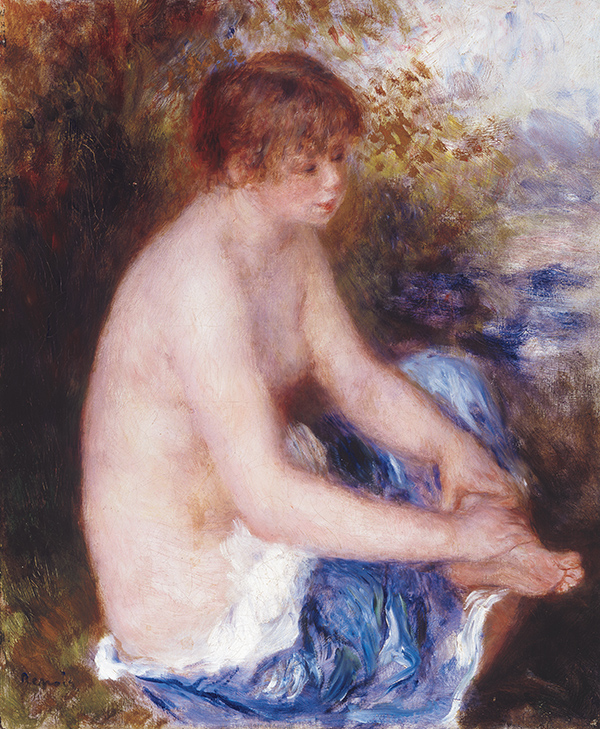Renoir: The Body, The Senses
June 8–September 22, 2019

Pierre-Auguste Renoir
Little Blue Nude
c. 1878-79
Oil on canvas, 18 1/4 × 15 in.
Albright-Knox Art Gallery, Buffalo, New York, General Purchase Funds, 1941
Renoir and the Decorative Tradition
From his earliest activity in the porcelain manufactory of Lévy-Frères, to the first decade of the twentieth century, Renoir produced decorative art—including ceramics, tapestries, furniture, sculptures, frames, carvings, and even paintings. His forays into decorative painting coincided with the efforts of such as artists as Mary Cassatt, Paul Gauguin, and Pierre Puvis de Chavannes, as well as the younger Nabi artists Pierre Bonnard and Édouard Vuillard. Renoir’s decorative compositions, however, typically lacked symbolic content and avoided historical references. In the academic hierarchy, the decorative was associated with non-naturalistic images—it often employed bright color and repeated patterns.
Following this definition, paintings such as Renoir’s Little Blue Nude, with summarized bodies that dissolve into feathered, abstracted landscapes, can be seen as decorative figure paintings. The act of seeming “not to work after nature” is what, for Renoir, defined one of his favorite paintings—François Boucher’s Diana Leaving Her Bath—as “decorative.” He proclaimed it to be “the first painting that grabbed hold of me . . . although people never hesitate to tell me that this is not what one should love, that Boucher is ‘only a decorator.’ As if being a decorator is a defect! Boucher is one of the painters who best understood the body of a woman.”